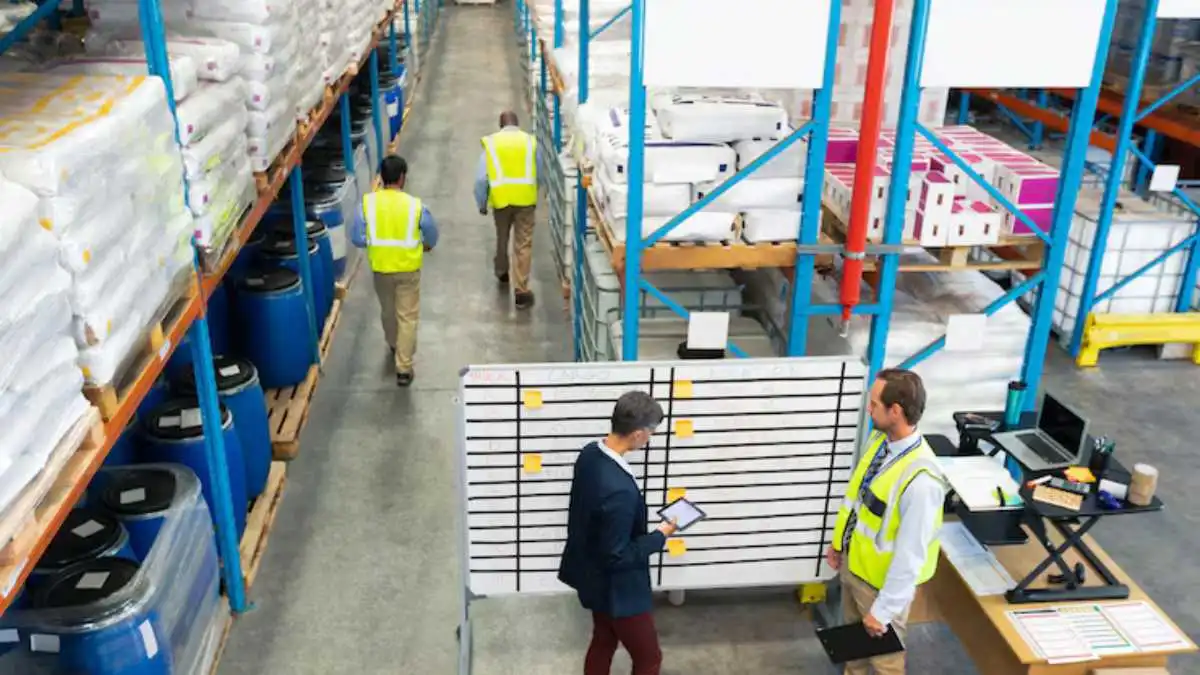BUSINESS
How Third-Party Logistics Warehouse Can Improve Order Accuracy?

In the rush of handling large orders in your e-commerce business, you often end up shipping wrong products. No matter the size of your business, this problem exists everywhere. Especially when the businesses fail to rent a warehouse or still follow the outdated processes.
If you are looking for a third-party logistics warehouse, you should find their processes, benefits, and technologies beforehand. Because no provider shares insights on every detail before you sign the deal. And to prevent order inaccuracies, understanding this key aspect is crucial.
In this blog, you will explore the perks of leveraging a third-party logistics warehouse to improve order accuracy. During the distribution time, their services ensure that your customers receive the right products on time. So, keep reading it till the end.
Understanding the Importance of Order Accuracy
Order accuracy means the correct fulfillment of the customer orders. This extends beyond the general perception of delivering the right product. Products in the right quantity reaching the right customer determines the correct order completion. Customers, too, trust and remain loyal to companies and stores acquiring high order accuracy rates.
When an order is inaccurate, customers return the product and might end up losing trust in the retailer’s products. You also end up paying extra shipping costs for rearranging transportation and completing the deliveries. This is where renting a logistics warehouse is helpful to overcome the many causes behind the unreliable deliveries.
Challenges in Maintaining Order Accuracy
Maintaining order accuracy can be challenging for many reasons. Some of the most common and overlooked ones are mentioned below.
1. High Volume of Orders:
As businesses grow, you also need to handle large orders, process them, and ensure they are correct in order. Maintaining and processing orders is a challenge when you don’t have a warehouse equipped with necessary processes.
2. Complex Inventory:
Managing stocks with complex and duplicate SKUs (Stock Keeping Units) is another challenge too. As this can lead to errors in picking, packing, and shipping products, maintaining the right SKUs with the help of a logistics warehouse is crucial to identify and track the stocks.
3. Human Error:
Manual processes, such as picking items from shelves under pressure or to meet deadlines is another reason behind a failed inventory management.
4. Inadequate Technology:
Without the right technology, tracking inventory, processing orders, and ensuring accuracy becomes more difficult.
5. Inefficient Processes:
Outdated or unsuitable warehouse processes also delay or make a room for miscommunication, resulting in a loss of correct order completion.
The Role of Third-Party Logistics (3PL) Warehouses
Third-party logistics include warehousing, inventory management, order fulfilment, and shipping. Here is how they help.
1. Reliable and Automated Technology
The 3PL logistics warehouse is equipped with modern and automated systems to reduce human involvement. Warehouse Management Systems (WMS), barcode scanning, automated picking systems, and real-time tracking data makes the logistics process easier.
If WMS tracks inventory at its correct location, manages orders, and optimises the picking and packing process, then barcode scanners identify and track every item to prevent wrong pick-ups.
Likewise, automated systems, such as conveyor belts and robotic pickers enhance the safety and reliable picking. 3PL providers use real-time data tracking to monitor inventory levels, order status, and shipping information.
2. Skilled Labour with Expertise
The third-party logistics warehouse employs skilled and well-trained workers with an expertise in warehouse management methods and technologies. Additionally, their labourers are competent in managing different product categories in large volumes. All of these skills in the logistic company puts your stress away to manage complex orders.
3. Functional Warehouse Layout
A practical warehouse layout is crucial for smooth order fulfilment. 3PL providers have warehouses that maximise the use of available space. Eventually, this aspect reduces the time to pick, pack, and ship orders.
For example, the workers place high-demand items in accessible locations. Also, there is a zoning of products based on the size, weight, and order frequency. Some 3PL providers with the efficient logistics warehouse use cross-docking to unload stocks from incoming trucks. And thereafter, the process involves loading the stock directly onto outbound trucks with minimal handling.
4. Efficient Inventory Management
Another benefit behind securing logistics companies is to make the best use of their inventory management systems. From providing real-time stock visibility to preventing stockouts and overstocks, cycle counting, just-in-time inventory, or demand forecasting are essential.
5. Quality Control Processes
3PL logistics warehouses implement strict quality control processes as well. This includes verifying every order against the details, double-checking the item, reporting any errors, and correcting the wrong order from further processing.
6. Scalability and Flexibility
3PL providers offer scalability and flexibility that are essential for maintaining order accuracy during peak seasons or fluctuating demands. Their ability to scale operations up or down ensures that orders are fulfilled accurately even during periods of high demand.
3PL warehouses can quickly adjust their staffing levels to handle increased order volumes, reducing the chances of errors caused by overworked staff. Also, they adapt their processes to meet the specific needs of their clients, ensuring that orders are fulfilled accurately regardless of changes in order volume or product mix.
Final Words
We hope you found this blog useful. As you see, considering a logistics warehouse is the foundation to ensure the accurate order fulfillments. Partnering with a third-party logistics warehouse helps to leverage advanced technology, skilled labour, optimised processes, and efficient inventory management.
Whether you’re dealing with high order volumes, complex inventory, or seasonal fluctuations, a 3PL provider like Carrabbas’ Group ensures that your customers receive the right products every time.
-

 BIOGRAPHY7 months ago
BIOGRAPHY7 months agoBehind the Scenes with Sandra Orlow: An Exclusive Interview
-

 HOME1 year ago
HOME1 year agoDiscovering Insights: A Deep Dive into the //vital-mag.net blog
-

 HOME1 year ago
HOME1 year agoSifangds in Action: Real-Life Applications and Success Stories
-

 BIOGRAPHY1 year ago
BIOGRAPHY1 year agoThe Woman Behind the Comedian: Meet Andrew Santino Wife




























